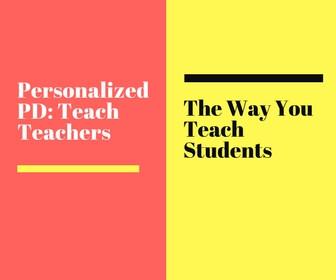“By examining ideas about creativity, broadening perspectives, and implementing innovative assessment measures, [we] can foster the creative minds the world needs.”
—“The Creativity Imperative,” Education Update, October 2013
In a recent interview with NPR, Margo Figgins, the founder of the Young Writers Workshop of the University of Virginia, called creativity “the orphan of today’s rush to standardization.” Sir Ken Robinson echoes this in one of the most widely viewed TED Talks of all time, “Do Schools Kill Creativity?”
But contrary to what the standards prescribe, they aren’t meant to dictate classroom instruction, says Alane Starko in her EL article, “Creativity on the Brink?” They’re “intended to be the floor of learning, not the ceiling. So when dealing with the standards, let your mantra be ‘Take the next step.’”
When it comes to implementing creativity, taking that next step can be challenging. “Creativity is often associated with fun, fluff, and frills,” say Ronald Beghetto and James Kaufman in “Fundamentals of Creativity.” As such, creative students are often considered “daydreamy, distracted, or disruptive: traditionally negative attributes in the classroom,” adds Jessica Roake in “The Creativity Imperative” from the October issue of Education Update.
Part of the myth perpetuating those stereotypes is that creativity is a free-for-all—that it can’t (in good conscience) be guided, taught, or, especially, assessed. But that’s far from true, says Susan Brookhart in her EL article, “Assessing Creativity.” Brookhart explains that creativity can be an assessment category, and by giving students appropriate feedback, teachers can actually “help students become more creative in their work.”
According to Beghetto and Kaufman, feedback to help students develop their creative metacognition “should follow the Goldilocks Principle—it should be neither too harsh (stifling students’ motivation) nor too mild (failing to acknowledge real-world standards.”
In her book How to Create and Use Rubrics for Formative Assessment and Grading, Brookhart shared a Rubric for Creativity, which also appears in both her EL article and in the October Education Update, that helps teachers give students feedback on their application of creative thinking skills in an assignment. In “Assessing Creativity,” Brookhart cautions, however, that the purpose of the rubric is not to generate a grade; rather, it’s designed to “help clarify criteria for success and show what the continuum of performance looks like, from low to high, from imitative to very creative.”
Striking a balance by providing “specific, yet open-ended criteria” can help educators reach the sweet spot when it comes to assessing creativity, says Roake, who also interviewed science teacher Anthony Cody for her article. Cody cautions that “We [should] assess creativity in a broad way, because as soon as you attempt to describe it with any precision, you have trapped the butterfly under glass and killed it.”







